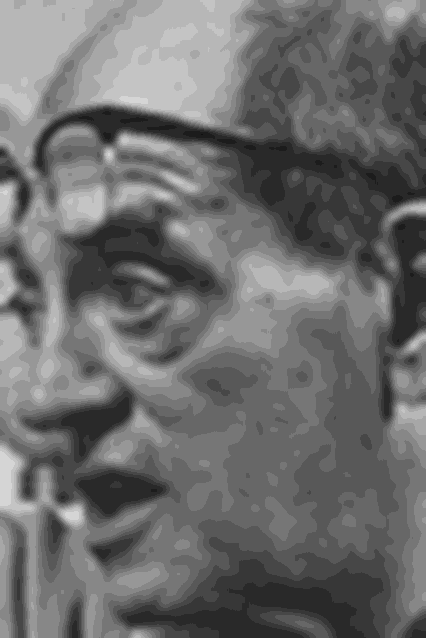The film tells the poverty-stricken story of the
inhabitants of the Hurdes, a mountainous area of Estremadura where the
population live on next to nothing, causing a condition of ignorance,
malnutrition and disease. Only the Catholic church appears to thrive on
this unfertile land. The film was first shown in Madrid in 1933
accompanied by music by Brahms and a live commentary from Luis Buñuel
himself, who qualified it as an "essay in human geography" Its
production was made possible through the financial support of the
anarchist Ramón Acín, who would be shot in 1936 by pro-Franco forces.
The film was immediately banned, as it presented a decidedly negative
view of Spain. As civil war brought the country to the forefront of
international attention in 1937, the film found distributors in France
and Great Britain.
Biography
film director

Luis Buñuel
Luis Buñuel (Calanda, Spain, 1900 - Mexico City, Mexico, 1983) studied literature and philosophy in Madrid and graduated in 1924. He moved to Paris, where he became a member of the surrealists and, along with Salvador Dalì, made Un chien andalou, followed the next year by The Golden Age. He returned to Spain and, when the civil war broke out, he was invited to coordinate the anti-Franco propaganda in Geneva and then in Paris. He moved to Mexico in 1939, where he became involved in cinema once again and made, between Mexico, France and Spain, films like The Exterminating Angel, Belle de jour and The Discreet Charm of the Bourgeoisie.
FILMOGRAFIA
filmografia esenziale/essential filmography
Un chien andalou (id., 1929), L’âge d’or (id., 1930), Los olvidados (I figli della violenza, 1950), Él (Lui, 1952), Ensayo de un crimen (Estasi di un delitto, 1955), Nazarín (id., 1958), Viridiana (id., 1961), El ángel exterminador (L’angelo sterminatore, 1962), Le journal d’une femme de chambre (Il diario di una cameriera, 1963), Simón del desierto (Simon del deserto, 1965), Belle de jour (Bella di giorno, 1967), Tristana (id., 1970), Le charme discret de la bourgeoisie (Il fascino discreto della borghesia, 1972), Le fantôme de la liberté (Il fantasma della libertà, 1974), Cet obscur objet du désir (Quell’oscuro oggetto del desiderio, 1977).
